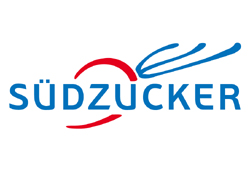Welcome to VIPsight Asia - India
 |
 |
 |
|
| Naveen Kumar | Gunjan Bhardwaj | John M.Itty |
27 November 2017
The India Proxy Season 2017 came to an end on September 30, 2017
InGovern collated meeting details of 1,502 companies. These meetings included Annual General Meetings (AGMs), Extraordinary General Meetings (EGMs), Court Convened Meetings (CCMs) and Postal Ballots (PBs) and were held during the period of January 1, 2017 to September 30, 2017.
The full report, prepared by InGovern, can be downloaded from here: India Proxy Season 2017
Key insights of the proxy season are:
- Eight Indian companies faced shareholder activism in 2017
- Activism has shifted from individuals to funds
- Activism in 2017 was carried out through multiple fronts - meetings, courts and media
- Investors have been scrutinizing proposals more than ever
- 84 resolutions of Top-100 companies had more than 20% dissenting votes either by institutional or non-institutional shareholders, or promoters. This comprised nearly 10% of total resolutions proposed by these companies
- Auditors are being rotated more frequently than before
Listed below are some of the statistics of the Proxy Season 2017:
- A total of 10,972 resolutions were proposed by these 1,502 companies
- This included 9,889 resolutions through AGMs, 268 resolutions through EGMs, 60 resolutions through CCMs and 755 resolutions through PBs
- 8,291 resolutions were classified as ordinary resolutions while 2,681 were special resolutions
- 9,601 resolutions were proposed by the management while 1,371 resolutions were proposed by shareholders
- September was the busiest month with 5,811 resolutions being tabled at the meetings
- August (2,372 resolutions), July (1,521 resolutions) were the second and third most busiest months respectively
The report also contains sections on:
- A note on shareholder activism in India in 2017
- Proposals of Top-100 Companies that were dissented by a significant percentage of shareholders
- Regulatory updates in 2017
- Recommendations of Uday Kotak Committee on Corporate Governance
12 Februar 2015
Securities and Exchange Board of India Announces New Insider Trading Regulations
On January 15, 2015, the Securities and Exchange Board of India, the securities market regulator in India ("SEBI"), announced the Securities and Exchange Board of India (Prohibition of Insider Trading Regulations) 2015 ("2015 Regulations"). The 2015 Regulations replace the earlier regulations governing insider trading in India -- the Securities and Exchange Board of India (Prohibition of Insider Trading) Regulations, 1992 ("1992 Regulations"). The 2015 Regulations will become effective on May 15, 2015, i.e., four months after their notification.
The 2015 Regulations seek to (a) address the inadequacies of the 1992 Regulations; (b) establish a legal structure which conforms to global best practices and the changes brought about by the Companies Act, 2013; and (c) consolidate the changes effected by circulars, notifications, amendments of enactments and judicial precedents concerning securities laws in India since 1992.
This Client Advisory highlights the key changes effected by the 2015 Regulations to the current insider trading regime, and various related key concepts, including "connected persons", "unpublished price sensitive information" ("UPSI") and "insider". The 2015 Regulations have also introduced certain new measures including a more comprehensive code of conduct and fair disclosure along with trading plans for lawful trading by insiders.
Key Highlights
The following are some of the key changes that have been implemented by the 2015 Regulations:
- Scope: While the 1992 Regulations were applicable to listed companies only, the 2015 Regulations apply to listed companies as well as companies that are proposed to be listed on a stock exchange. There is no clarity as to which companies would fall in the category of 'proposed to be listed', i.e., is it a company that has filed a draft red herring prospectus?
- Connected Person: The definition of "connected person" has been significantly widened. The term now includes, among others (a) immediate relatives; (b) persons associated with the company in a contractual, fiduciary or employment relationship; and (c) persons who are in frequent communication with the company's officers within the definition of a connected person. This widens the definition under the 1992 Regulations, which was solely based on positions and designations of persons in relation to the relevant company. The 2015 Regulations now raise a presumption that connected persons are in possession of UPSI unless they prove otherwise.
- Insider: The revised definition of connected persons has resulted in the related widening of the definition of an "insider". The 2015 Regulations specify that the definition of insider includes both (a) "connected persons" (by virtue of their relationship with the company) and (b) those who are in possession of UPSI (by virtue of mere possession of UPSI). However, the 2015 Regulations permit the person having possession or access to the UPSI to prove that he was not in such possession or that he has not traded while in possession of the UPSI.
- Generally Available Information: The 2015 Regulations now define "generally available information". This makes it easier to identify UPSI which is any information that is not generally available information. If the information is accessible to the public on a non-discriminatory platform, like a stock exchange website, it will be construed as generally available information.
- Unpublished Price Sensitive Information: UPSI now includes price sensitive information relating to the company or its securities that is not generally available. The 1992 Regulations did not include information relating to securities in the definition of UPSI. The 2015 Regulations now provide a definitive legal test to determine UPSI which is in harmony with the listing agreement, while specifying a platform for lawful disclosure, i.e., the stock exchange website. There is an explicit prohibition on the communication and procurement of UPSI, except for legitimate purposes, due performance of duties (for example, by employees of the company who are in possession of UPSI) and the discharge of legal obligations. Consequently, communication and procurement of UPSI has become a distinct offence, other than for expressly exempted purposes.
- Disclosure Requirements: The 2015 Regulations mandate that a person in possession of UPSI who intends to trade in securities discloses such UPSI two days prior to trading. This is to ensure that such information is made available to the public for an adequate period of time before trading. The 2015 Regulations permit a company to seek disclosures from connected persons regarding their ownership of the company's securities and trading of such securities to ensure compliance with the 2015 Regulations. The 2015 Regulations also require that companies formulate a code of fair disclosure that they should adhere to, based on certain objective principles stated in the 2015 Regulations.
- Derivative Trading: In order to conform to the Companies Act, 2013, key management personnel and directors have been prohibited from engaging in derivative trading of the securities of the company.
- Safeguards: The 2015 Regulations have established safeguards to protect legitimate business transactions. The 2015 Regulations include safeguard exclusions for communication and procurement of UPSI in pursuance of transactions relating to private investment in public equity, mergers and acquisitions and off-market promoter transactions, provided that the disclosure requirements (discussed above) are complied with. These exclusions also protect trades undertaken in the absence of leaked information, recognizing Chinese walls within a company. Further, trades pursuant to a trading plan (discussed below) do not constitute an offence under the 2015 Regulations. This is an important amendment; now a due diligence of a listed company will enable a prospective purchaser to have wider access to information without any risk of it being construed as an offence under the 2015 Regulations .
- Trading Plan: The 2015 Regulations have formally recognized the concept of trading plans in India. The 2015 Regulations permit trading by persons who may continuously be in possession of UPSI so that they are able to lawfully trade in securities in accordance with a pre-determined trading plan for a period of at least one year. Trading plans have to comply with the 2015 Regulations and are required to be approved by the designated compliance officer. The 2015 Regulations further restrict the trading plan from including trades that are to be made twenty days prior to the end of a financial period for which results are to be declared by the concerned company.
Gibson, Dunn & Crutcher LLP, 333 South Grand Avenue, Los Angeles, CA 90071
28 March 2013
Indian Depository Receipts: Two way Fungibility and its Implications
Naveen Kumar
An Indian Depository Receipts (IDR) is “an instrument denominated in Indian Rupees in the form of a depository receipt created by a Domestic Depository against the underlying equity of issuing company to enable foreign companies to raise funds from the Indian securities markets.”
The provisions for IDR are encapsulated in the Section 605 A of the Companies Act and Issue of Indian Depository Receipts Rules, 2004 (IDR Rules) of the securities regulator, Securities Exchange Board of India (SEBI). The instrument is further governed by “Issue of Capital and Disclosure Requirements “(ICDR Regulations, 2009) of SEBI and Reserve Bank of India (RBI).
Fungibility, in general financial terms, denotes interchange ability of any security class. Fungibility, in context of IDR means, ability of IDR to convert into underlying equity security and vice versa. In its circular (CIR/CFD/DIL/10/2012) dated August 28, 2012, SEBI in detail prescribed framework for one way fungibility, that is, conversion/ redemption of IDRs into underlying equity shares. It enabled the partial convertibility of IDR into shares up to 25 % percent of the initially issued IDRs in a given financial year. However, regulation does not allow holders of underlying equity shares to convert such equity share into an IDR. Redemption of an IDR into underlying equity shares was permissible subject to fulfilling certain conditions, such as, a minimum holding period of one year from the date of issue of IDRs and such IDR qualifying as an infrequently traded security on the stock exchange(s) in India.
The regulatory position has now being modified by SEBI to provide for limited two-way fungibility for IDRs, similar to the fungibility available in case of an American Depository Receipt (ADR) or Global Depository Receipt (GDR). SEBI in their circular (CIR/CFD/DIL/6/2013) dated March 1, 2013 provides a detailed framework for partial two way fungibility of IDRs, meaning that IDR can be converted into underlying equity security and vice versa within available headroom ( that is, difference between IDR originally issued and outstanding IDR further adjusted to underlying equity share).
Partial fungibility of IDR by foreign issuer is provided in following ways: converting IDRs into underlying shares; or converting IDRs into underlying shares and selling the underlying shares in the foreign market where the shares of the issuer are listed and providing the sale proceeds to the IDR holders; or both the above options may be provided to IDR holders. Option of fungibility at time of issuance of IDR cannot be changed without prior approval of the SEBI. However, fungibility of underlying equity share into IDRs will also be subject to securities regulations of that country, where foreign company is listed.
Partial two-way fungibility under the current regulation is allowed only after one year of issuance of the IDR. Regulation further requires, that fungibility shall be provided by foreign issuer on continuous basis, and headroom for conversion and significant transactions (for conversions/ reconversions) should also be disclosed on a continuous basis.
The endeavour of SEBI regulation on two fungibility is “to encourage more number of foreign companies to issue IDRs in the Indian market”, as envisaged in the last budget of the year 2012-13. Two way fungibility of IDRs’ have been considered as major constraints by foreign issuers for raising funds from Indian capital markets, thus limiting its attractiveness. Till date, since the issuance of IDR guidelines, IDRs have received by limited interest with only UK banking major Standard Chartered getting listed on Indian Stock exchanges in 2010, and issuing IDR.
Two way fungibility of IDR will allow true market price of IDR in relation its underlying equity share, as it will endow holders of IDRs or equity shares, the scope of arbitrage. It means that investors of the foreign company ( either, Indian investors holding IDRs or foreign investors holding equity shares in their home country) can convert shares into IDRs or vice versa, depending market movement of IDR or shares. This was not permissible earlier. Two way fungibility will realign the prices of IDRs and equity shares in capital markets of two countries, help investors of the company maximize their gains. However, only partial fungibility is permissible, as full capital account convertibility is not permissible and restrictions placed by Government and RBI to control the flux of foreign currency in the country.
IDRs only constitute a small portion of total equity shares. IDR listing, in their current form, as compared to equity securities would be low with infrequent trading and feeble trading volume. Due to this, currently IDRs are confronted with problem of low liquidity and volatile price due weak market breadth of IDRs. The regulation permitting two-way fungibility will increase market breadth of IDRs and definitely improve their liquidity. IDR are likely to attract more investors, and foreign issuers will able to attract all Indian investors to fully subscribe to depository receipts.
Cross border mergers and acquisitions will also be facilitated by the new guidelines of two fungibility of the SEBI. Merger of Indian company (Transferor Company) with foreign company (Transferee Company) and vice versa is permitted under section 234 of the Companies Bill, 2011. Two-way listing was listing was considered as major impediment to some cross border mergers. One of major cross border mergers like Bharti – MTN failed due to this. Dual fungibility in way allow dual listing, grant Indian shareholders to directly have shares of the foreign company, if it has been listed on Indian stock exchange and issued IDR for past one year. Two-way fungibility of ADR/GDR by SEBI in conjunction with RBI is already has been permitted. In acquisition deal, where foreign company acquires Indian company, Indian investors can have either shares of foreign company or equivalent cash. This will surely benefit investors and contribute to country’s foreign exchange account.
Two- way fungibility of IDRs, for sure, is step forward to increase the attractiveness capital markets and remove some barriers hindering the mergers and acquisition in Indian market. However, certain challenges still persist, such as automatic fungibility, security laws of foreign company (where it is listed) and limited current account convertibility. If these can be taken care of effectively (first keeping in view the country’s interest), it will allow Indian capital market to grow rapidly, and substantially rapid its pace of economic development.
5 July 2012
Shareholder Faciltated With E-voting by Securities Regulator
Naveen Kumar
India’s securities regulator, the Securities Exchange Board of India ( SEBI) has facilitated shareholders of the listed companies with E-voting system. The decision was taken by SEBI in its Board meeting held on 26th June 2012. It had made the electronic voting system mandatory for all listed companies — in respect of those businesses to be transacted through postal ballot — which would help shareholders participate in decision-making without being physically present in the meetings.
SEBI has decided to implement it in a phased manner. In its briefing, it said, “it would be mandated for top 500 listed companies on the BSE and NSE based on market capitalization”. The listed companies may choose any of the agency that providing e-voting platform.
The initiative on the part of SEBI, guided by directives of the Indian Government is long leap towards greater empowerment and involvement of shareholders in the decision making process of listed companies at Annual General Meeting (AGM). The move will certainly enlighten the passive institutional and retail shareholders of India, and make them an active participants of the corporate governance process.
27 April 2012
John M.Itty
Panel for Corporate Governanace in India
To improve Corporate Governance, the Ministry of Corporate Affairs; Government of India,has constituted a high-level committee comprising representatives from the corporate world, industry bodies and government departmenst. This committee will suggest a comprehensive policy framework to enable corporate governance of highrest quality in all classes of companies without impinging on their internal autonomy to order their affairs in their best judgment.
As per reports, the government i keen on bringing in major changes in corporate governance guidelines by including good practices such as tax compliance and asking companies to adopt it voluntarily.
30 January 2012
Naveen Kumar
Environmental, Social and Governance (ESG) Reporting: Attains a Mandatory Status in India
It is increasingly recognized that companies are accountable not only to the shareholders, but to all the stakeholders and to the society. Recognizing the need for same, Securities Exchange Board of India (SEBI), India’s securities regulator, on November 24, 2011 mandated listed companies to publish a Business Responsibility report. The report should be annexed to company’s annual report and elaborate its effort in the direction of environmental, social and governance.
Securities regulator effort augments the Ministry of Corporate Affairs (MCA) earlier initiative. MCA after much deliberation and discussion, on July 8, 2011 released “National Voluntary Guidelines on Social, Environmental and Economic Responsibilities of Business” . The business responsibility reports as mandated SEBI should include what issuers have done towards the 9 key principles given in the voluntary guidelines. SEBI, however, has adopted a cautious approach to mandate environmental, social and governance reporting in companies. It is mandated in phased manner, with its current applicability only to top 100 companies (based on the market capitalization). Slowly, all the companies will come under purview of publishing business responsibility report.
SEBI effort in congruence with MCA initiative is in right direction. MCA whereas took a initiative to implement ESG in through voluntary way, SEBI made it mandatory. Business activities are not performed in isolation, but they affect various stakeholders (like employees, its creditors and customers), environment and whole society. Business is sustainable only if does not harm environment and works for betterment of entire society. Investors, now not only look for financial disclosures, but other important non-financial (EGG) parameter disclosures. Companies have after this SEBI requirement have to adopt more focused approach towards environmental, social and governance (ESG). Companies adopting better standards may use this for their competitive advantage. But, only future will tell, to which extent companies adhere to it ( “ in form or in substance”) and regulators are able to enforce it.
28 January 2012
John M.Itty
Vodafone wins Rs.1,10,000 Million tax case in India
The Supreme Court of India on 20 January, set aside the demand of Indian tax authorities asking the Netherlands –based holding company-Vodafone to pay capital gains tax to the tune of over Rs.1,10,000 Million on a 2007 offshore transaction in the purchase of a Cayman Island –based minority shareholder in Hutch-Essar. The offshore transaction , which gave the Vodafone holding company a 67 per cent stake in Hutch-Essar , was a bonafide, structured foreign direct investment into India, held a three-judge Bench of the Court.
The subject matter was the transfer of a company incorporated in Cayman Islands. Consequently, Indian tax authorities had no territorial tax jurisdiction to tax the off-shore transaction; the Bench said. Vodafone International Holdings BV, a company resident for tax purposes in the Netherlands, acquired the entire share capital of CGP Investments (Holdings) Ltd. On 11 February 2007. Revenue authorities claimed that this would give the Netherlands-based company a 67 per cent controlling interest in Hutch-Essar, accompany resident for tax purposes in India. However, Vodafone disputed this saying that it only controlled a 67 per cent interest , but not controlling interest, in Hutchison Essar Ltd.
According to Vodofone, it was asked by the Income Tax department in October 2010, to pay Rs.1,12,170 million in capital gains tax . After Bombay High Court upheld the demand, the company filed an appeal in the Supreme Court; and the highest court in India, issued aa verdict in favour of the company.
29 November 2011
Naveen Kumar
Curbing and Monitoring Related Party Transactions: A Way Forward to Enhancing Corporate Governance Standard in India
Related party transaction are often very diverse, complex and generally involve transaction between firm and its related entity (like holding or subsidiary firm, promoters, controlling shareholders, key managerial persons, directors and their direct relative). It is symptomatic of serious concern of corporate transparency. Though, not all the related party transactions are detrimental, but may arouse potential conflict of interest. They are frequent cause of exploitation of firm assets by its management or its owners.
In India, existence of large number of related party transactions has long background and pertinently linked to existence of complex ownership structure in companies. Most of the companies in India have high ownership concentration, and largely part of family managed business groups, while state controlled firms also play an important role. Around, 60 percent of total firm that approximately account for 65 percent of market capitalization, belong family managed groups (Chakrabarti et. al, 2007). The promoters (the business groups – the principal owners) are largest and dominant controlling shareholders in India. The average promoters holding in BSE 500 companies for year 2009 was approximately 51.197 percent (according to CMIE database). Complexity of family group structure and interconnectedness among firs bequeaths of related party transactions inn India. The pyramiding and tunneling effects leads to opaqueness in ownership structures, and grants promoters (family groups) ownership rights much more than their voting rights. The high ownership concentration structure prevalent in India, minimizes the typical agency problems arising from separation of ownership and control. However, it raises distinct agency issues and cost due to potential conflict of interest arising between large shareholder and minority shareholders. The dominant shareholder may exploit firm resources for their private benefits, depriving minority shareholders of their equitable rights. In family managed firms, many of the transactions takes between controlling shareholder and firm that occur at arm’s-length distance and often that result in expropriation of shareholder wealth. Expropriation may come in several forms involving a series of self-dealing transactions through sale of goods and assets and services, loan from company on preferential basis, or through transfer of assets from one company to another (Johnson et al., 2000). Academic researchers have suggested that family managed business groups of India were able to tunnel significant for portion of wealth from companies through abusive related party transactions via non-operating part of profits (Bertrand et. al, 2002; Chakrabarti et. al, 2007).
In India, there exists a pervasive regulatory framework to deal with the issue of related party transactions. The Indian Companies Act 1956, inadvertly covers the aspect of related party transactions without explicitly referring trem. There are several sections in Companies Act, which intends to curb expropriation of firm resources through related party transactions. Section 297 - requires approval of contract by Board of Directors. Further, prior approval of Central Government is necessary for companies having paid up capital more the Rs 10 million. Section 299 requires disclosure of interest by directors in contract with company. Disclosure of nature of interest in contracts and arrangement to both is required. Section 300 disallows the director to participate in discussion and voting, when the board resolution is passed relating to any business in which he is interested. The scope of related party is whereas limited only to the directors in the Companies Act, a broader scope is engulfed in Indian Accounting Standards (AS 18) and Clause 49 of Listing agreement. AS 18 promulgated by Institute of Chartered Accountants of India (ICAI) is on the lines of International Accounting Standards 24 (IAS 24) is mandatory for all companies from 2004. Under AS 18, two parties construe to be related, “if at any time during the reporting period one party has the ability to control the other party or exercise significant influence over the other party in making financial and/or operating decisions”. Disclosure requirement under this standard require “name of the related party and nature of the related party relationship where control exists should be disclosed irrespective of whether or not there have been transactions between the related parties Clause 49 of Listed Agreement necessitates audit committee to review all related party transactions and disclosure by companies on materially significant related party transactions that may have potential conflict of interest. Further¸ Auditing and Assurance Standard 23 makes it necessary on part of auditor to identify and disclose the related party transaction in the financial statements. The aspect of related party transaction with tax implications is also covered in the Income Tax Act under Section 40 A (2).
In India, therefore, plethora of laws and regulations subsist to curtail the detrimental effects arising out of related party transactions. Promulgation of AS 18 is considered as significant step towards bring corporate transparency in dealings of family managed groups. However, in practices companies majority of which are family controlled, strive only to comply with inescapable stipulations of law and always endeavor to get better of existing ambiguities. Most companies venture to comply in form rather than in substance. Any discussion on related party transaction in India is incomplete, without mention of India’s largest accounting fraud at Satyam Computers Ltd (now, known as Mahindra Satyam). The fraud at Satyam extricated only because of failure of abusive related party transactions, where promoters wanted to siphon out fictions assets from Satyam ( a widely held firm) to their another firms Maytas Infrastructure and Maytas properties. The discussion further assume significance, considering the fact that it has been importunate and pertinent issue in number of high profile governance failure and frauds like Enron, WorldCom, Tyco and Paramalat. In case though related party transaction was not inherent cause of fraud, but certainly it was failure of different corporate governance mechanism in monitoring such transactions. The episode illustrates how transactions may adverse to perception of market integrity, (Times of India, 2010) , where investors lost approximately Rs 140 billion of wealth.
OECD recognizes related party transactions particularly, between controlling shareholders and firm ( known as “ abusive related party transactions) as one of the major challenge business landscape of Asian economies and major barrier to corporate transparency in markets like India ( OECD, 2009; Kar, 2010). As implicated by OECD ( OECD, 2009), the major challenge to curb and monitor related party transactions is not due to existence of legal regulatory framework but ineffective enforcement mechanism and lax board oversight. After case of Satyam, the situation has focused attention on improving corporate governance standard in India for dealing with abusive related party transactions effectively. Curbing and monitoring of related party transactions has come to forefront in corporate governance reforms of India. Policy makers and regulator are now aware of the risks arising out these related party transactions that may impede trust of investors , who are already in doldrums due to fear of economic recession. So in this regard, several efforts have made in Companies Bill, 2009 to deal with this issue with both ex-ante and ex-post mechanism. Ex-ante stipulations are aimed at detecting and controlling these transactions, by having stringent board oversight and shareholder approval mechanism, while confiscating unnecessary government intervention. These include
- Key Managerial Personnel and directors included under related party
- No central government approval required on related party transactions to reduce unnecessary time delays and more flexibility to companies
- Shareholders to approve all related party transactions in bigger companies, while board of directors to approve it in remaining companies
- Disclosure to be made in board of directors report, while Central Government has power to prescribe the format
- Audit committee provided more specific role and responsibilities in conjunction to related party transactions
- Interested parties from disallowed from voting in special resolution for prescribed related party transaction with aim to protect the rights of minority shareholders
Equally important, attempts have also been made in the Companies Bill, 2009 to address minority shareholder grievances through ex-post mechanisms. Stipulations will now allow shareholders to file Class Action Suits to obtain their legal right in case of abusive related party transactions from court. Special courts may set up quick readdress of minority shareholder grievances from such transactions. Further, emphasis has on strict enforcement of provisions of the Bill, by stringent financial penalties and legal disciplinary action, in case of non-compliance.
The two aspects related monitoring of related party transactions, considering the complex ownership of Indian companies is the role of independent auditors and independent directors. Not being related to management or controlling shareholders, independent directors are considered as efficacious mechanism for protecting minority shareholder rights through their role in Board and Audit Committee. Independent directors for the first time find statutory recognition in the legislative books via Companies Bill, 2009. Enough provisions are instigated in the Bill to ensure that their independence is not compromised and they actively monitor abusive related party transactions On the other hand, related party transactions are frequent and one of difficult type of transactions to trace from the audit point of view, considering the inherent opaqueness these transactions due to persistence of complex ownership structure. Independence of auditor and quality of audit performed by him assume significance in such context of monitoring and reporting related party transactions. The Bill endeavors to enhance auditor independence through auditor rotation. Further, an independent board may be set up in proposed law, which may look upon the issue of auditor independence and quality of audit performed by them timely intervals.
In conclusion, the legal reforms initiated after Satyam case through Companies Bill, 2009 are in right direction to limit the effect of the abusive related transactions involving promoter. As mentioned above, in latest effort through this Bill, policy makers and regulators endeavor to enhance corporate transparency and raise standards of corporate governance in India. Through different mechanisms, the issue of abusive related party has been addressed with sincere effort to protect minority shareholders rights. Every attempt is made to bring out more transparency thorough disclosures, engagement of minority shareholders in such transactions and aftermath re-addressal through court. External auditors and Board, particularly independent directors need to play a greater role with responsibility in monitoring such abusive transactions detrimental to shareholders and raising the bar of corporate governance in India. However, it remains to be seen, how these mechanism work actually in India, which has long history of enough laws with little compliance and fragile enforcement.
References and Further Readings:
1. Bertrand, M., Mehta P. and Mullainathan, S. (2002), “Ferreting out Tunneling: An Application to Indian Business Groups"; Editionly Journal of Economics, , 117(1), pp. 121-48.
2. Chakrabarti, R., Megginson, W.L. and Yadav, P.K. (2008), “Corporate Governance in India”, Journal of Applied Corporate Finance, 20 (1), pp.59–72
3. Clause 49 of Listing Agreement, available at : www.sebi.gov.in/circulars/2005/dil0105.html
4. Companies Act (1956) Acts of Parliament, 1956,
Available at: http://indiacode.nic.in/fullact1.asp?tfnm=195601.
5. Companies Bill (2009) Available at: http://www.mca.gov.in/Ministry/actsbills/pdf/Companies_Bill_2009_24Aug2009.pdf
6. Indian Accounting Standard ( AS)18, Available at : http://220.227.161.86/262accounting_standards_as18new.pdf
7. Johnson, S., LaPorta, R., Lopez-de-Silanes, F. and Shleifer, A. (2000) , “Tunneling,” American Economic Review,90, pp. 22-27
8. Kar, P. ( 2010), “Related Party Transactions and Effective Governance: How it works in practice in India” in OECD - Asia Roundtable on Corporate Governance, Fighting Abusive Related Party Transactions in Asia.
9. OECD ( 2009), Guide on Fighting Abusive Related Party Transactions in Asia, Corporate Governance Series, September 2009
10. Times of India (2010), “More Disclosures Must in Related Party Deals: SEBI” , available at :















